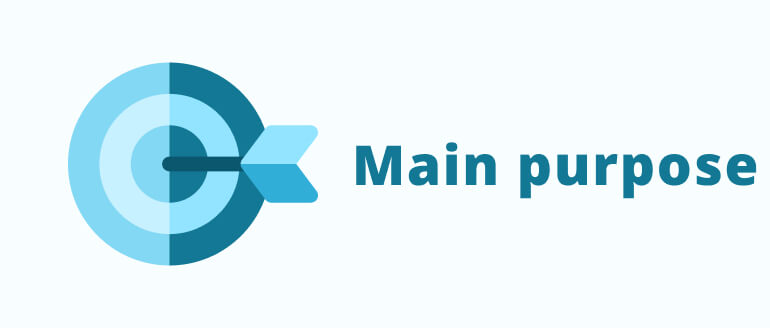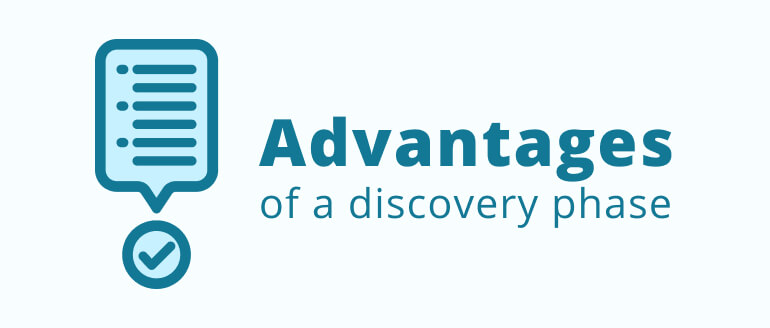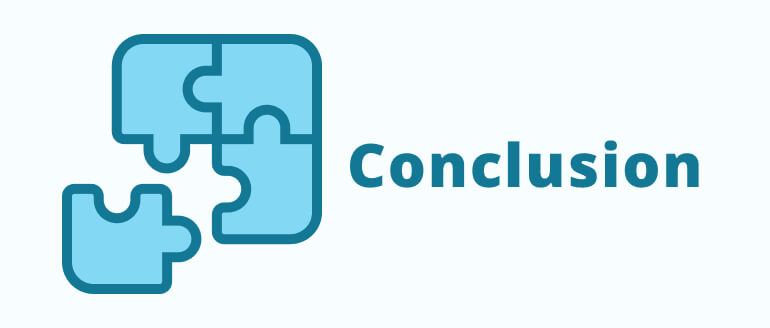Before laying the foundation and starting building a house, you need to have a detailed plan. This principle also applies to the development of any product. If you think that a brilliant idea, a couple of technical minds, and daring marketing budgets are enough to get you started, then you definitely need to read this post to the end. In addition to fierce competition and demanding customers, nine out of ten startups fail because their product is not right for the market.
What makes the happy 10% of survivors stand out? They don't neglect the planning phase or, in other words, the project discovery phase during development.
Business owners usually want to accelerate each segment of their business: develop a product faster, get to market more quickly, and start making money. The trap is that "faster" often amounts to "poor quality" and, no matter how illogical it may seem, "much more expensive." As a result, halfway through development, they go head to head with something that would have been easy to fix or foresee in the beginning and now it threatens to derail the entire project.
An even more deplorable scenario is when a product that is not suitable for the market has already been built and has set sail. A brilliant idea fails and, with it, the money invested, the time spent and the opportunity to be one of those ideas that change the world and bring millions to their creators are gone. This path is taken by 90% of startups. And we do not want yours to become one of them.
Careful analysis and planning can help you discover the many pitfalls and prevent most failures. While not a panacea, the discovery phase is vital for businesses that are interested in a viable product delivered on time and on budget.
Main phases of a real project

The project life cycle, in a perfect world, includes five phases: initiation, planning, implementation, control, and completion. Most of the processes that take place when developing a product refer to one of them. Why do we say "in a perfect world"? Because in reality, the steps leading up to actual development are often neglected. But they are usually more critical than all subsequent phases combined.
Let's take a closer look.
- Initiation is the first phase of the project life cycle. At this phase, there is a meeting with clients and stakeholders to visualize what needs to be achieved: business targets, desired results, etc. It also identifies risks, dependencies, constraints, and other variables that may affect the project's progress.
- Planning is one of the most significant steps in development. At this phase, a comprehensive plan is created, including building a project roadmap, documenting all work processes, and eliminating possible issues. This approach makes it possible to clearly define the resources required for implementation (human, technical, financial, etc.), as well as minimizing the risks of going beyond the defined deadlines and budgets.
- Implementation is the actual project implementation. The goal of the phase is to transform the client's requirements into a finished product. Development is heavily dependent on planning.
- The control process is about comparing actual performance with planned. Corrective actions are applied if necessary, which allows achieving the agreed results within the defined deadlines and budgets.
- Completion, After successfully fulfilling all project obligations, the finished product is handed over to the client
When a project goes through all five phases, its chances for a successful launch increase significantly. Skipping steps, preceding the actual development, threatens user needs, may lead to missed requirements, and, ultimately, wrong decisions. In other words, the discovery phase is focused on defining business targets, commercial viability, technological complexity, and scope of the work required to deliver a successful product.
Know more and order discovery phase
to make your future project cost-effective
ORDER DISCOVERY PHASEWhat is the Discovery Phase?

Discovery is the first phase of product development. It includes the analysis to determine how your business idea will morph into a future software solution. The goal of this stage is to make the product viable. For this reason, it requires the active participation of company representatives, project managers, often designers, developers, and even potential users. Depending on the project scale, the discovery phase may last from one week to two months.
The key pillars of the discovery phase are as follows:
- Business valuation
- Setting functional and non-functional requirements
- Finding the target audience’s pain points, to actually solve them with the product
- Customer requirements systematization
- Analysis of the project relevance
This approach allows you to better organize the development process and implement your idea in the most efficient and cost-effective way. In this case, a modified Pareto principle is applied: 80% of problems are caused by 20% of causes. Finding most of them before the actual development will save you the lion’s share of budgets and time.
Wondering how to build
an exclusive software product for your business?
CONTACT USExcluding the discovery phase from the development process may have the following consequences:
- Creation of a product that absolutely does not meet the target audience’s needs or does not have a market.
- Increase in time, budgets, and the scope of a project due to the lack of complete development requirements. Many unaccounted functions have to be added on the go, which also negatively affects the integrity of the solution.
- Obtaining a non-scalable architecture that does not allow for further product expansion with minimal effort and investment.
- Incompatibility of approved technologies with additional ones that have to be used in the development process to add essential functions that were not initially considered.
The discovery phase allows you to see and prevent these possible risks from the outset. Of course, there are projects for which the research phase is optional. In this case, we are talking about simple products created from a template. However, if you are planning to bring a fresh solution to the market, create a new niche, and do not have a complete picture of the final product, then the discovery stage is a must.
You need analysis and planning in the following cases:
- Unclear or vague requirements
- Need for proof of concept
- Complex and/or long-term projects
- Many stakeholders with conflicting visions of the final product
- Success is critical, so it is fundamental to eliminate the slightest errors and uncertainties
As a result of the work done at the project discovery phase, business owners get these results:
- Product vision
- Detailed documentation (functional and non-functional requirements, technology stack, user stories, feature map, etc.)
- UX concept and wireframes
- MVP development plans and evaluations
This standard list may vary depending on the project complexity, its scale, and the presence or absence of technical expertise on the client’s side.
What is the Main Purpose of the Discovery Phase?

The fundamental goal of the discovery phase is to predict and eliminate risks such as a product’s failure to meet user expectations, incurring unforeseen costs, and project freezing due to the inability to pay.
The client’s interest in this project discovery phase is based on obtaining a crystal clear understanding of the end result, starting with the justification for using the selected technologies and ending with clear deadlines and budgets.
Errors that occur during development are expensive. That is why an essential component of the discovery phase in project management is the idea verification and the strategy for its implementation, as well as time and cost optimization.
What are the Advantages of a Discovery Phase?

Even having a detailed business plan does not mean that all possible risks have been taken into account. Especially when it comes to technical issues and requirements. Any product creation is a team effort, where even the smallest detail can affect the success of the entire project. Therefore, only a 360-degree analysis of nuances can help determine the direction and the amount of work required.
If you are still in doubt of the need for the discovery phase, here are some of the benefits for businesses to consider:
- Understanding how the product will meet business goals
- Predicted development results within a clearly defined deadline
- Getting a solution that fully meets the requirements set
- Transparent functionality
- Accurate budgeting
- Understanding the scope of the project
- Building a unique value proposition, focusing on the target audience’s real pain points and weaknesses of competitors (if the client has carried out preliminary research of the competitive environment)
- Understanding the anticipated risks and implementing an effective strategy to reduce them
- Minimizing upfront costs and fast return on investment due to product versioning with prioritization of vital functions
- Creation of a viable product that has a market and satisfies the user needs
- Increasing the likelihood of project success
By ignoring the discovery phase, you run the risk of creating a product without market demand and increasing the chances of changing it.
Wondering how to build
an exclusive software product for your business?
CONTACT USHow to Organize a Discovery Phase?

As we mentioned, the discovery stage usually involves a project manager, technical architect, UI/UX designers, and developers.
Also, almost every step of the process requires you to interact with the team and sometimes even potential users. We propose considering, in more detail, the main stages of work within the detection phase. They may vary slightly depending on the requirements and the project size.
Identifying business goals
Business targets define all the functions of the future product. Therefore, at this stage, the project manager communicates with stakeholders to identify all the necessary points and clarify the smallest details. Owlab experts know both technical and business standards for various markets, which allows us to accurately identify business needs and transform them into a successful product that delivers value.
Subject area study
At this stage, the market and competitor analysis conducted by the client is studied and the target audience and product concept determined: how it should work to effectively solve the target audience’s problems. The surest way to build a successful business is being user-centric.
Identifying bottlenecks
It is necessary to identify possible project bottlenecks during the discovery phase. This allows you to work out a strategy for their elimination and reduce possible risks.
Defining basic functions
Functionality is typically influenced by three factors:
- Product goals
- Market changes
- Budget
Owlab experts always insist on starting development by creating a minimum viable product that can be tested on the market. After launching the MVP, and getting real users’ reactions, you can add the functions you really need and get the software solution that your target audience expects.
It is also vital to prioritize functional capabilities by value. For example, features that might be affected by market changes are not added to the MVP, but rather a more robust version of the product is created.
Developing a product scaling strategy to meet growing business needs
Knowing your business goals allows you to get a clear picture of product development in the long run. This is a critical moment, as this understanding defines the approach to architecture. Making business logic scalable saves you time and budgets, as well as making it easy to add new functionality as your business grows.
Defining technical solutions
At this stage, specialists provide individual architectural solutions that meet the requirements set. The choice of technologies for the project is carried out with the aim of obtaining an easy-to-maintain and scalable product with the required performance.
Wondering how to build
an exclusive software product for your business?
CONTACT USCreating wireframes
Visualization of the future solution is crucial. Wireframes visually show the user flow, taking into account different behavioral patterns: transitions between screens, an arrangement of design elements, etc. Once approved, they form the basis for future design.
Creating a project roadmap
A roadmap is a visual representation of a project implementation strategy with milestones. It allows the client to see the process of creating a product and understand what tasks, in what sequence, are performed by specialists.
Creating project documentation
The ultimate goal of the discovery phase is to get a list of project materials, including the technical specification, roadmap, and layouts. The specification includes all information about the development process, functionality, selected technologies, team, and deadlines, taking into account possible risks.
Conclusion

Even if you think that you know your product to the smallest detail, do not rush into development. An hour of planning can save you tons of hours of work and thousands of dollars. The discovery phase allows all stakeholders to come to a common project vision and ensure the end goal - delivering value to the business - remains the same at every stage.
Once the discovery phase is complete, you can confidently move on to design and development. Having a full picture of the project allows designers to create truly user-friendly interfaces, developers to build a product more efficiently based on clear requirements, and the client does not worry about the final result, deadlines, or increased budgets. A well-planned project will keep pace with the times and will precisely achieve business targets.
The Owlab team is committed to making your product viable and successful, which is why the project discovery phase is a fundamental step in the customer relationship. Contact us to get more information and start a project!